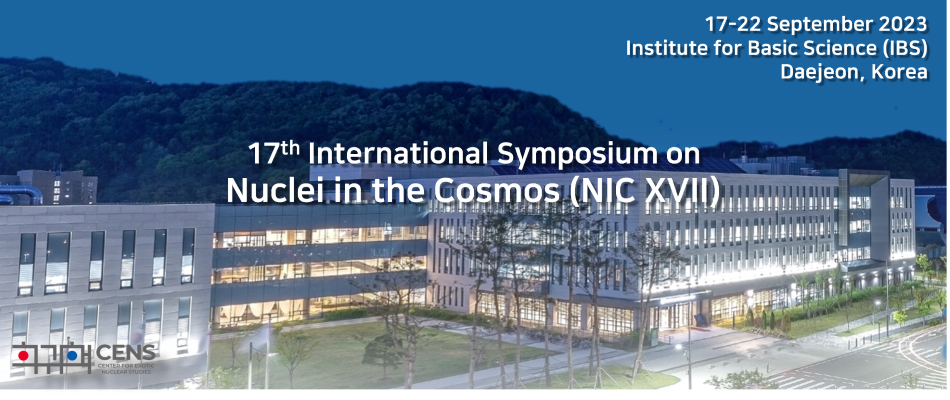Speaker
Description
In recent years the plethora of new astronomical observations has shown that the synthesis of heavy elements cannot be explained just by the three traditional processes (s, r, and p). For this reason, new processes have been proposed that are able to explain these new observations. The ``intermediate'' or i process (see e.g. [1]) is one such process and corresponds to neutron densities and time scales intermediate between the slow (s) and the rapid (r) neutron-capture processes. It involves nuclei that are roughly 5 neutrons away from the last stable isotope and as such the majority of their nuclear properties are experimentally known. The only missing piece of information from the nuclear physics side is the neutron-capture reaction rates.
In the present work we investigate the production of La. La is one of the elements for which a large number of stellar observation data is available. La/Eu has been used traditionally to distinguish between the s and r processes, while enhanced Ba/La has been observed in metal-poor stars beyond s and r process values. At the considered neutron density of the i process, the uncertainties are dominated by the reaction $^{139}$Ba(n,γ)$^{140}$Ba.
In a collaboration between Michigan State University (MSU), the University of Cologne, the University of Guelph, the University of Oslo, iThemba LABS and Lawrence Livermore National Lab we have experimentally constrained the neutron capture rate for the $^{139}$Ba(n,γ)$^{140}$Ba reaction rate, for the first time [2]. The measurement of the relevant reaction took place at the CARIBU facility at Argonne National Lab. A combination of the $\beta$-Oslo method and the newly developed "Shape method" [3] were used to extract the nuclear level density and the $\gamma$ ray strength function, which were used to constrain the neutron capture reaction rate on $^{139}$Ba. The resulting rate is used in astrophysical i-process calculations which show that the uncertainty in the predictions for the double abundance ratio of [La/Eu] and [Ba/La] is greatly reduced and is now comparable to the uncertainties from astronomical observations. With this result we have been able to narrow down the group of stars out of the JINAbase that most likely have experienced neutron densities associated with rapidly accreting white dwarf simulations, which will be a stepping stone for further investigations of this astrophysical site.
[1] P. Denissenkov et al., ApJ Letters 834, L10 (2017)
[2] A. Spyrou, D. Muecher et al., under review at Physical Review Letters, 2023
[3] D. Muecher, A Spyrou et al., Phys. Rev. C 107, L011602, 2023

